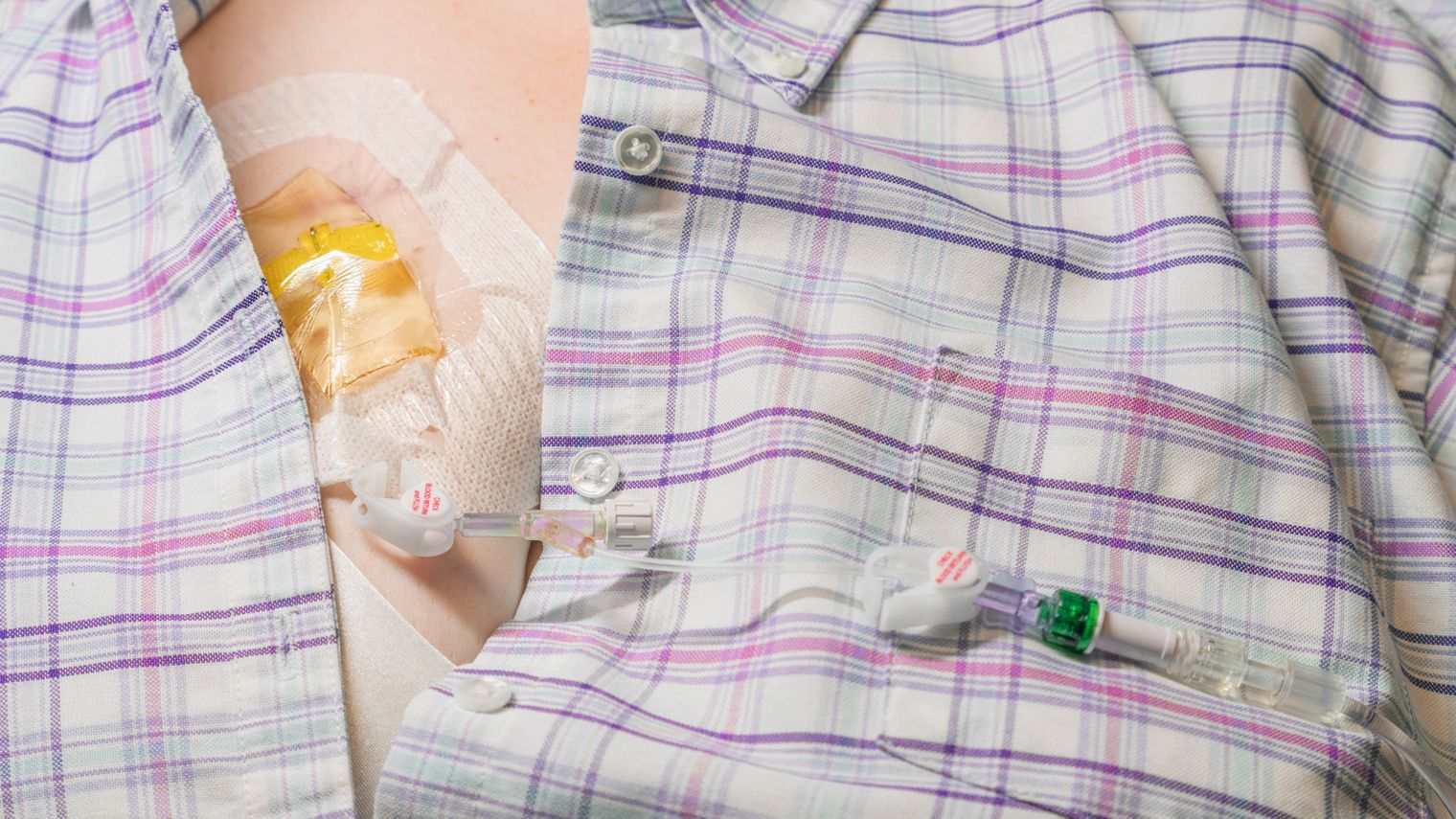What Is a Chemotherapy Port, and How Does it Work?
September 21, 2023
Content created for the Bezzy community and sponsored by our partners. Learn More

Photography by SKC/Stocksy United
A chemo port can help you avoid endless needle pokes during breast cancer treatment, among other benefits.
Prior to receiving chemotherapy for breast cancer, your doctor may advise you to get a port. Because chemo often requires multiple blood draws along with intravenous (IV) drug and fluid infusions, ports can help make the treatment process smoother and less painful.
If your doctor has suggested you get a chemotherapy port, here’s how they work and why they may be useful to you during treatment.


What is a chemo port, and why is it needed?
During breast cancer treatment, IV medications and fluids may be needed, and you’ll likely have multiple blood draws. A chemo port can make those infusions and blood draws easier because your healthcare professionals can poke the port instead of your skin.
A chemo port is a small disc or reservoir, usually around the size of a quarter, with a rubber seal at the top. A thin, soft, flexible tube known as a catheter or line connects the disc to a large vein, sometimes in your neck.
The port is inserted under the skin, typically just below your collarbone or in your upper arm. Once inserted, chemotherapy drugs and fluids can be administered via a special needle inserted into an access point in the port. Blood can also be drawn through this access point.
A chemo port can help save your veins from the pain and potential damage of multiple infusions and blood draws.
How is a chemo port implanted?
Chemotherapy ports are implanted during a short surgical procedure (around 30–45 minutes) usually at an outpatient surgery facility.
Your doctor may administer anesthesia so that you’ll sleep through the procedure. Or you may be given medication that relaxes you with a local anesthetic to numb the area around the incision site so you don’t feel pain during the procedure.
Once you’ve received anesthesia, your doctor will make two small incisions: One below the collarbone and one at the base of your neck. The port will be inserted into the collarbone incision, while the catheter will be stretched under the skin up to the neck incision. There, it will be connected directly to a vein.
Once the port and catheter are inserted, the incisions will be closed and covered with dressing bandages to keep them clean and prevent infection.
What does a chemo port look like?
Typically a chemo port looks like a small disc about the size of a quarter underneath the skin. Once inserted, you’ll see a bump where it sits under the skin, but it’s usually easy to hide with clothing. You may have a scar on the skin where the port incision was made, but it will fade with time.
What are the benefits of a chemo port?
Chemo ports offer breast cancer patients a number of benefits:
- fewer needle sticks in veins
- less pain during blood draws and infusions
- the ability to administer more than one medication at a time
- the ability to administer medications for longer periods since the needle can be left in the port
- less risk of medication touching the skin
What is the risk of a chemo port?
While chemo ports can be really beneficial during treatment, there are some risks associated with them, including:
- catheter blockages
- infection at incision sites
- blood clots
- the catheter or port moving under the skin
- the catheter twisting under the skin
Do chemo ports hurt?
Immediately following the insertion surgery, your port and incision may be tender. This pain will subside after a few days and can be treated with over-the-counter pain relievers such as acetaminophen (Tylenol) or ibuprofen (Advil, Motrin).
Needle sticks during infusions or blood draws can sting, but your doctor may prescribe a pain-relieving cream such as lidocaine that you can apply before treatments or blood draws. This cream will numb the skin over your port, making needle pricks painless.
The area around your chemo port may feel sensitive when you wear a seatbelt or backpack. Wrapping a folded cloth or towel around the straps against your port can help reduce irritating friction.
How is a chemo port removed?
Chemo ports are designed to stay in the body for months or even years — the full duration of your treatment. But once treatment ends, the port will be removed.
Chemo port removals are conducted similarly to how they’re inserted: with a quick outpatient procedure, usually under local anesthesia to numb the area. Your doctor will make another small incision to remove the disc and the attached catheter.
In some cases, the port may be removed during mastectomy or reconstruction surgeries.
The bottom line
While chemotherapy infusions and frequent blood draws can be painful and damaging to veins, a chemo port can make the process easier and less painful.
But as with any medical procedure, there are some risks involved, so it’s important to talk with your doctor about whether or not a chemo port is right for you and your treatment plan.
Medically reviewed on September 21, 2023
2 Sources


Like the story? React, bookmark, or share below:
Have thoughts or suggestions about this article? Email us at article-feedback@bezzy.com.
About the author